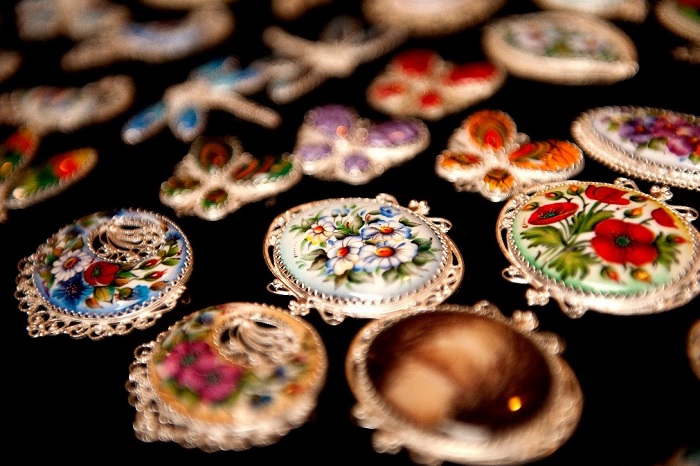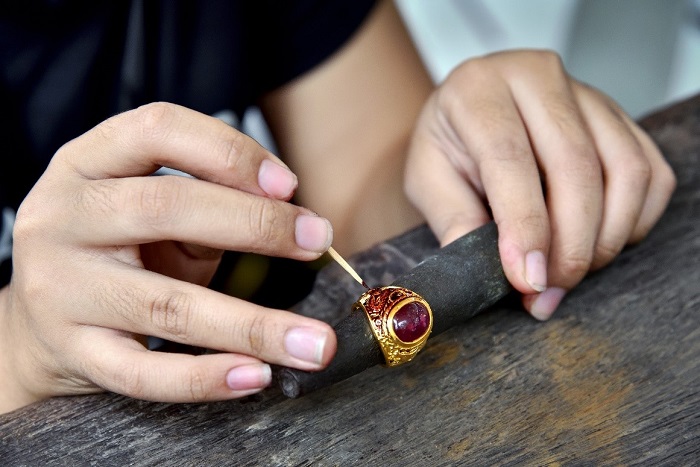ENAMEL
Category: Technique | Date: 09/11/2020
Enameling is a technique of colorful decoration on the surface of the metal. It offers versatility to jewelry making by allowing the designer to experiment with colors and designs without using much of colored stones.
Enameling is an age old technique of decorating jewelry and artifacts. The unique style of colorful designing is traced back to ancient Persian, Roman and Egyptian civilizations. The enameling technique uses fine powder and paste of glass with specific composition infused with metal at high temperatures. The substance fuses with the metal to create a glossy and smooth, colorful surface.

Technique
Enamel is a glass compound that generally features quartz sand, iron oxide, potassium oxide and borax. These are fused on high temperatures, usually 700-900 degrees Celsius, and form a colorless and transparent coating. Different metal oxides and chlorides are added to infuse colors. After extensive crushing, mixing, and washing, the material or fondant is applied on the desired metal. The skillful craftsman precisely puts the enamel on metal to avoid cracking and peel off.
The next step is to place the enameled piece in a furnace at an appropriate temperature. Here the enamel melts, fills the space and shows the vitreous shine. The piece is taken out and cool down for the desired result. The last step is to polish it with the carborundum file to obtain a flat and flawless surface.
Enamel could be transparent, translucent, or opaque. It depends on which metal it is going to be used as different metals may require fondants of specific transparency due to the reflectance of the material.

Types of Enamel
Over the years, the process of enameling has evolved manifolds. Here are the prominent ones that have been used for a long time.
Cloisonné Enamel
In this technique, the design is created with thin metal wires. The space is then filled with enamel fondant and the piece is subsequently placed furnace. The unique feature in this technique is the wires remain visible over the outline of the design.
Champlevé Enamel
In this process, the metal base is carved into, depressions and compartments are formed and filled with enamel layers.
Ronde Bosse
In this process, enameling is applied to the metal in three dimensional forms. The fondant is applied with the help of adhesive gum. When the piece is heated, the gum melts away and the enamel fuss with the metal.
Painted Enamel
In this technique, a single color enamel is applied to the metal that forms a background. The design is hand painted and the colors are used in order of their melting points, beginning with the hottest temperature. This prevents the colors from blending. With each color that is painted on, the piece is fired to fix that layer.
Enamel Photography
This method involves coating the enamel with a light sensitive solution, covering with a photo negative, and exposing it to light. The enamel is then coated with a black ceramic dust, which only sticks to the exposed areas and fired.
Guilloché Enamel
This technique involves engraving a design on the metal and applying a translucent enamel to it that allows the design to show through.
Plique-à-Jour
In this process the designs are made with wires on to a thin sheet of metal. This is then filled with enamel. The background is then removed to create a stained glass effect.

How to Clean Enamel Jewelry?
Soak your piece in warm soapy water for a few minutes. Wipe off any noticeable bits of dirt with a soft cloth. Rinse thoroughly and dry it gently.